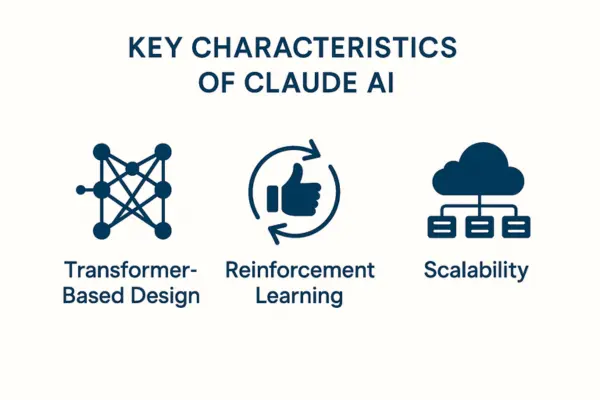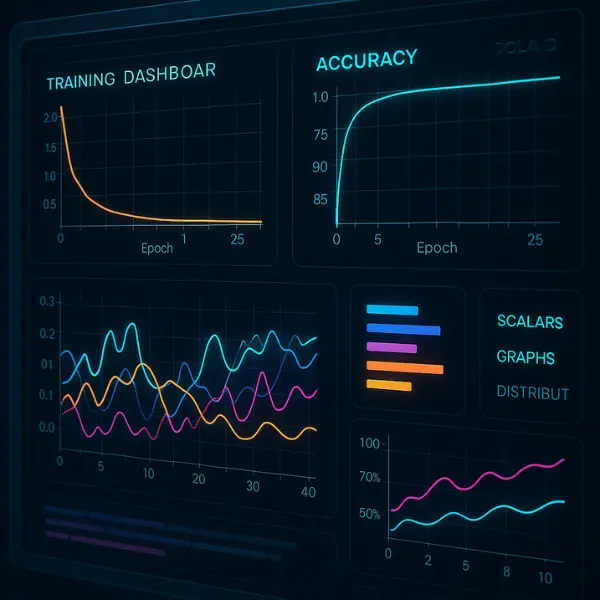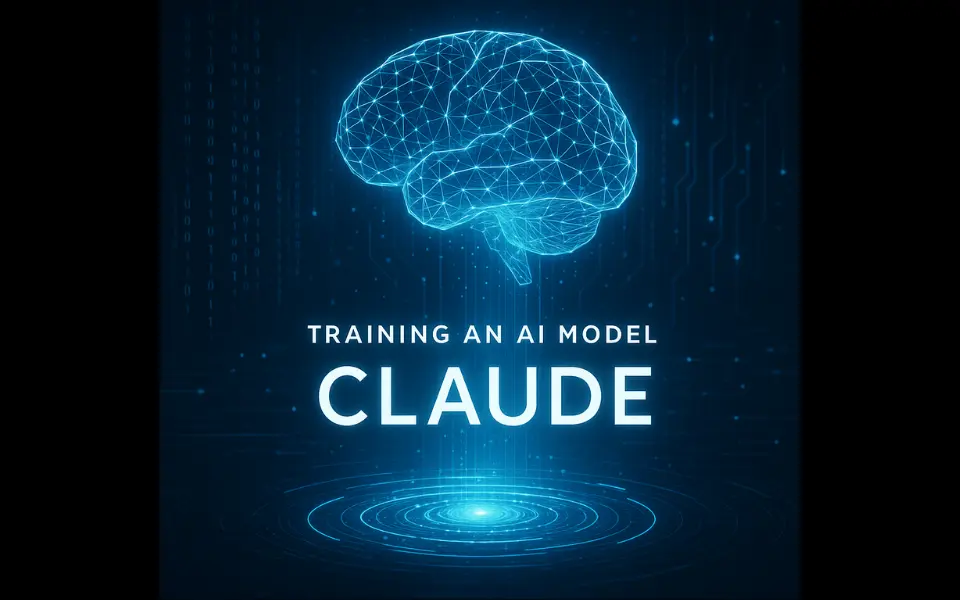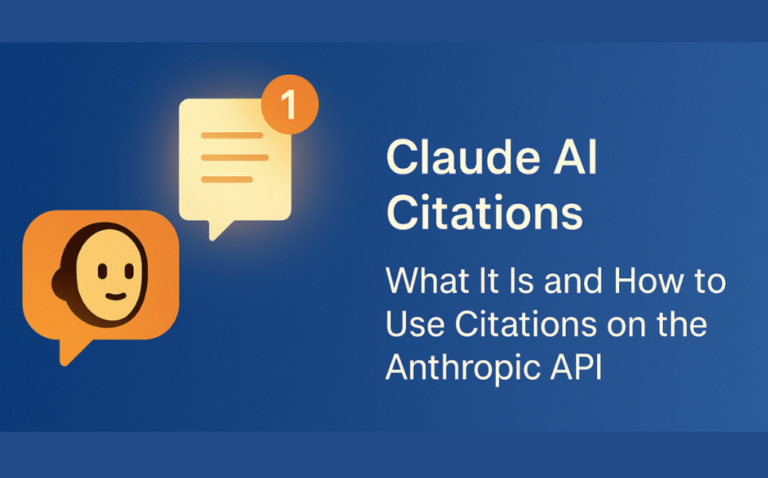How to Train Claude AI for Optimal Performance – Fine-Tuning for Personal Use
Training an AI model like Claude can seem like a daunting task. However, with the right guidance, tools, and understanding, you can harness its full potential. Claude AI’s adaptability and effectiveness come down to proper training, which enables it to perform tasks reliably and accurately.
Whether you’re a developer, researcher, or business professional, this guide will walk you through the essential steps to train Claude AI effectively.
Understanding Claude AI’s Architecture
Claude AI is a large language model designed for a variety of tasks, such as generating text, summarizing documents, and answering questions. Like other advanced AI systems, the core of Claude lies in its machine learning-based architecture, specifically transformer models.

Large language models like Claude learn patterns and correlations within text through an intensive training process. This process ensures Claude can generate human-like, contextually accurate responses.
Key Characteristics of Claude AI

- Transformer-Based Design – Claude uses a transformer architecture, enabling it to process contextual relationships between words in a sentence or document efficiently.
- Reinforcement Learning – Some aspects of Claude’s training involve human feedback to fine-tune the model’s understanding, such as adjusting outputs to align with expected behaviors.
- Scalability – Claude is designed to handle large datasets and complex tasks with versatility and high performance.
This foundation allows Claude AI to be fine-tuned on specific tasks with custom data sets, a key part of the training process.
Setting Up Your Training Environment
Before training, you’ll need the appropriate environment and tools in place. Claude AI operates in a cloud-based and scalable infrastructure, which means your setup can be adjusted for your project’s complexity.
Steps to Set Up Your Training Environment
- Select a Platform
Claude can be integrated into platforms supporting large-scale data processing and model fine-tuning. Examples include AWS, Azure, or Google Cloud for scalability and computing power.
- Access Claude’s Training Toolkit
Use the training API or developer tools provided to begin customizing the model for your use case.
- Ensure Resource Allocation
Allocate GPU/TPU resources to handle the computational load of training. Transformer-based models like Claude thrive on high-performance hardware.
- Install Required Frameworks
Claude AI’s architecture is compatible with libraries like PyTorch or Tensor Flow, enabling seamless integration with popular machine learning frameworks.
By organizing your environment efficiently, you set the stage for a smoother training process.
How Claude AI Uses Data for Training
Training Claude AI involves feeding it data segmented into patterns, examples, and context to learn from. However, understanding the source and quality of this data is critical.

Core Data Sources for Claude AI Training:
- Public Data
Claude learns from publicly available web content, ensuring it captures diverse knowledge across industries.
- Third-Party Licensed Data
Specialized datasets from credible sources enhance Claude’s ability to tackle niche or technical topics.
- User-Provided or Crowdsourced Data
When users provide data or interact with Claude, this feedback helps refine and enhance the model’s capabilities.
Why Data Quality Matters
High-quality training data leads to accurate responses and minimizes bias. Poor data, on the other hand, can drastically reduce the model’s performance and reliability. Always prioritize clean, relevant, and well-labeled datasets.
Preparing Training Data for Claude AI
The data preparation phase is where your AI starts to take shape. Properly structuring and organizing your training data is essential for its success.
Steps for Preparing Data:
- Collect Relevant Data
Gather data that aligns with your intended use case. For example, if you’re training Claude to assist with legal documentation, source law-related datasets.
- Clean the Data
Remove anomalies, duplicates, and noise from the dataset. This improves Claude’s understanding of patterns during training.
- Label and Annotate
Annotate the data to provide the required context for specific tasks. For instance, label customer service conversations with relevant intents (e.g., complaints, inquiries).
- Organize Into Training Batches
Break down your data into manageable chunks or batches to ensure balanced training and prevent data overfitting.
Proper data preparation prevents gaps in learning and contributes to a more efficient AI system.
Choosing the Right Training Techniques
AI models can be trained using various techniques depending on the task and required outcomes.
For Claude AI, the following approaches are effective:
- Supervised Learning
Provide paired input-output examples to guide Claude’s behavior. For instance, show how specific queries should result in specific responses.
- Reinforcement Learning
Leverage human feedback to train Claude further, often used in tandem with rewards-based performance adjustments.
- Fine-Tuning
Start with Claude’s pre-trained model and refine it using domain-specific data for your application for instance, customizing Claude for medical transcription tasks.
By selecting the most appropriate method, you ensure optimized learning tailored specifically to your project goals.
Monitoring Training Progress and Metrics

While training, it’s crucial to consistently monitor Claude AI’s progress.
Here are some essential metrics to track:
- Accuracy
Evaluate how often Claude provides correct outputs.
- Loss Functions
Monitor loss functions to measure the model’s error rate over time.
- Validation Performance
Check the model’s capability to perform on unseen validation datasets.
Use visualization tools like Tensor Board to track these metrics effectively.
Fine-Tuning Claude AI for Optimal Performance
Once trained, you can further fine-tune Claude AI for specific use cases. Fine-tuning is especially useful for tasks requiring deep contextual understanding, such as technical writing or customer handling.
Fine-Tuning Tips:
- Use smaller, high-quality datasets for focused adjustments.
- Keep track of changes during fine-tuning, ensuring they enhance rather than disrupt previous training.
- Test Claude using real-world scenarios to validate its improvements.
Common Challenges in Training Claude AI
Several common challenges can arise when training Claude AI:
- Overfitting
The model performs well on training data but poorly on new data. To prevent this, diversify your dataset and use regularization techniques.
- Data Imbalances
Uneven representation of categories in training data can skew results. Address this by augmenting under-represented datasets.
- Computational Limits
Training large models like Claude requires substantial resources. Leverage cloud solutions for on-demand scalability.
Understanding these challenges helps you design better workflows and avoid setbacks.
Best Practices for Successful Training
Following best practices ensures a smooth and effective training process.
Here are a few key tips for training Claude AI:
- Regularly update training data to stay relevant.
- Maintain transparency by documenting your steps and decisions.
- Validate Claude’s performance using diverse test cases.
By incorporating these habits, you align with industry standards and build confidence in your model’s capabilities.
Mastering Claude AI Training
Training Claude AI is not just about feeding it data; it’s a methodical process that involves preparation, execution, and refinement. By understanding its architecture, optimizing your environment, preparing high-quality datasets, and adopting the right techniques, you’ll unlock its full potential for your specific needs.
Start experimenting and see the power of Claude AI for yourself. Take the leap toward innovation by implementing these strategies today.







